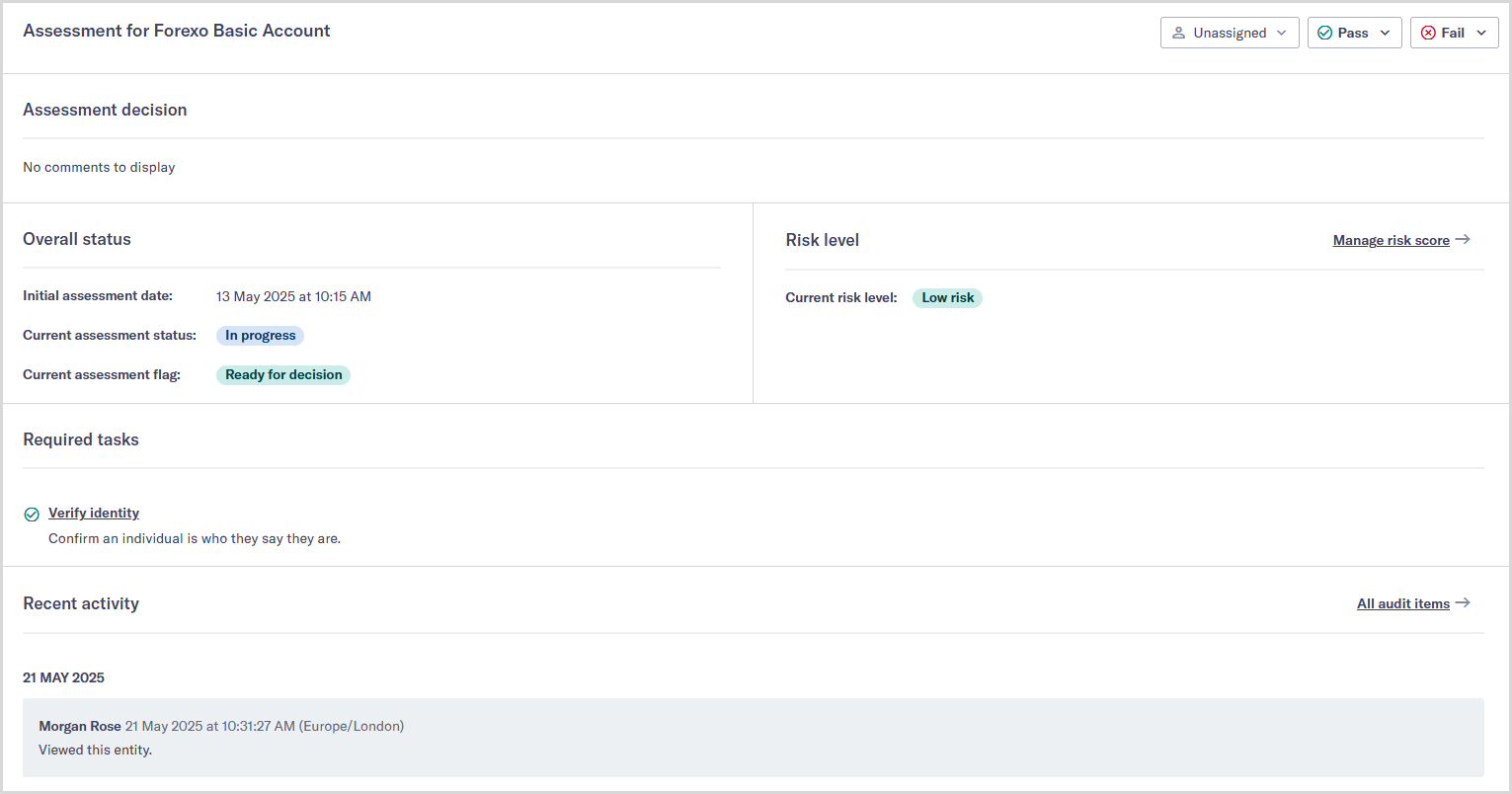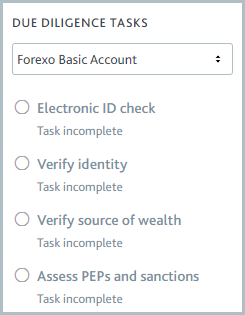The Assessment overview at a glance
The Assessment overview shows all assessments undertaken on the entity.
Learn more about the assessment lifecycle.
The Assessment status
Assessments can be in any of these stages:
Onboarding: This stage begins as soon as the assessment is created and continues until it has been passed or failed. During this stage, the entity is undergoing due diligence. A series of due diligence tasks are created, for example, to verify an individual's identity or bank account, which need to be passed for the assessment to pass.
Monitoring: The monitoring stage starts when the entity has passed the assessment. During this time, the entity is monitored to see if they no longer meet the requirements of any of the due diligence tasks or if the risk level of the assessment changes, which may mean additional due diligence tasks need to be completed.
Failed or canceled: A failed or canceled assessment means the entity doesn't meet the necessary criteria for the assessment. If an assessment was in the onboarding stage, it is considered failed. If the assessment was previously passed and was in the monitoring phase, it is canceled. Either decision can be reverted.

To help you understand what's going on with the assessment, you can check the assessment's status or flag, for example, Needs manual completion, Failed, or Automating. Learn more about what each assessment status and flag means.
Risk on the Assessment overview
If your company is using Risk, the risk level indicates what kind of risk the entity under assessment poses to your company: Low risk, Medium risk, High risk, Very high risk, or Severe risk. Typically, a higher risk level means that the entity needs to pass more due diligence tasks for their assessment to pass.
If the risk level is Undetermined, more information is required before the risk can be calculated. To see which information is missing, go to the assessment and select .
Tasks on the assessment
To see an assessment, navigate to the Entity data page for your chosen entity and select the assessment name in the Assessments menu section.

Note that if you want to see the audit log of everything that happened on the entity, visit the from the navigation.
The Required tasks section shows what due diligence is required for the assessment.
When the task has passed, it has this icon:

When the task has failed, it has this icon:

When the task is incomplete, it has this icon:

Note that all tasks must be passed for the assessment to pass.
You can reject tasks at any time to indicate the entity hasn't met the due diligence criteria, and fail their assessment.
If the entity has multiple assessments, the navigation shows tasks for all open assessments by default. You can use the drop-down menu to see tasks for a specific assessment.

Frequently asked questions
Why couldn't the assessment be passed/failed automatically?
The assessment's processing state indicates what needs to happen for it to progress to the next stage. For example, Requires risk score indicates more entity data is required to calculate the risk score.
Why are some tasks completed already?
This can be because someone else completed the task manually or because the task was completed automatically according to the assessment's workflow. Check the recent activity to see when and why tasks were completed.
A task was completed but is now incomplete. What happened?
Tasks can become incomplete for any of these reasons:
A new PEPs and sanctions or adverse media match was found.
A user marked a task as incomplete manually.
The task expired.
An assessment for a company associate is in review.
Why was a new task added to the assessment?
Further due diligence can be required for many reasons. For example, new entity data may have been added or changed, or the risk level may have changed. The assessment's workflow determines when tasks are added.